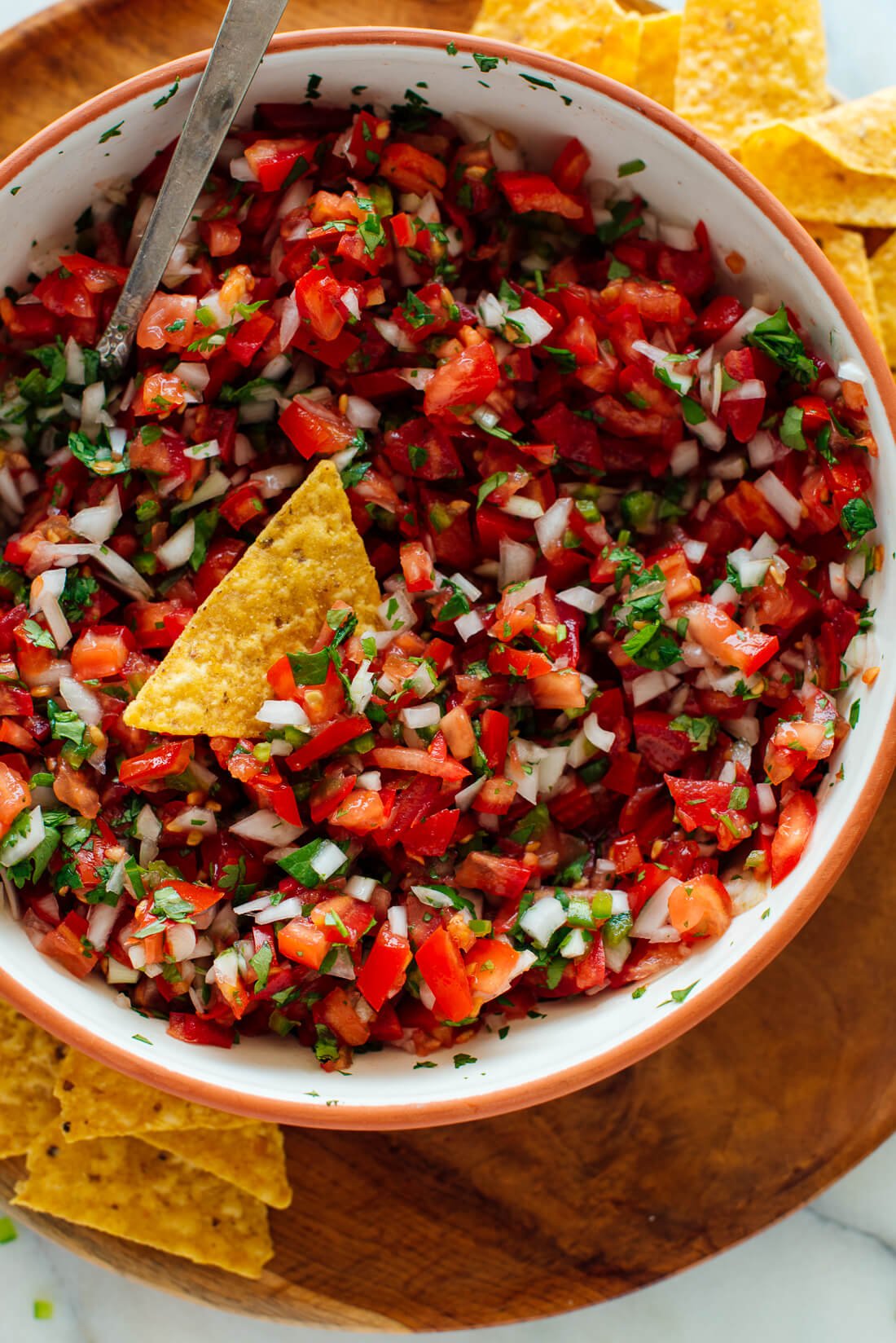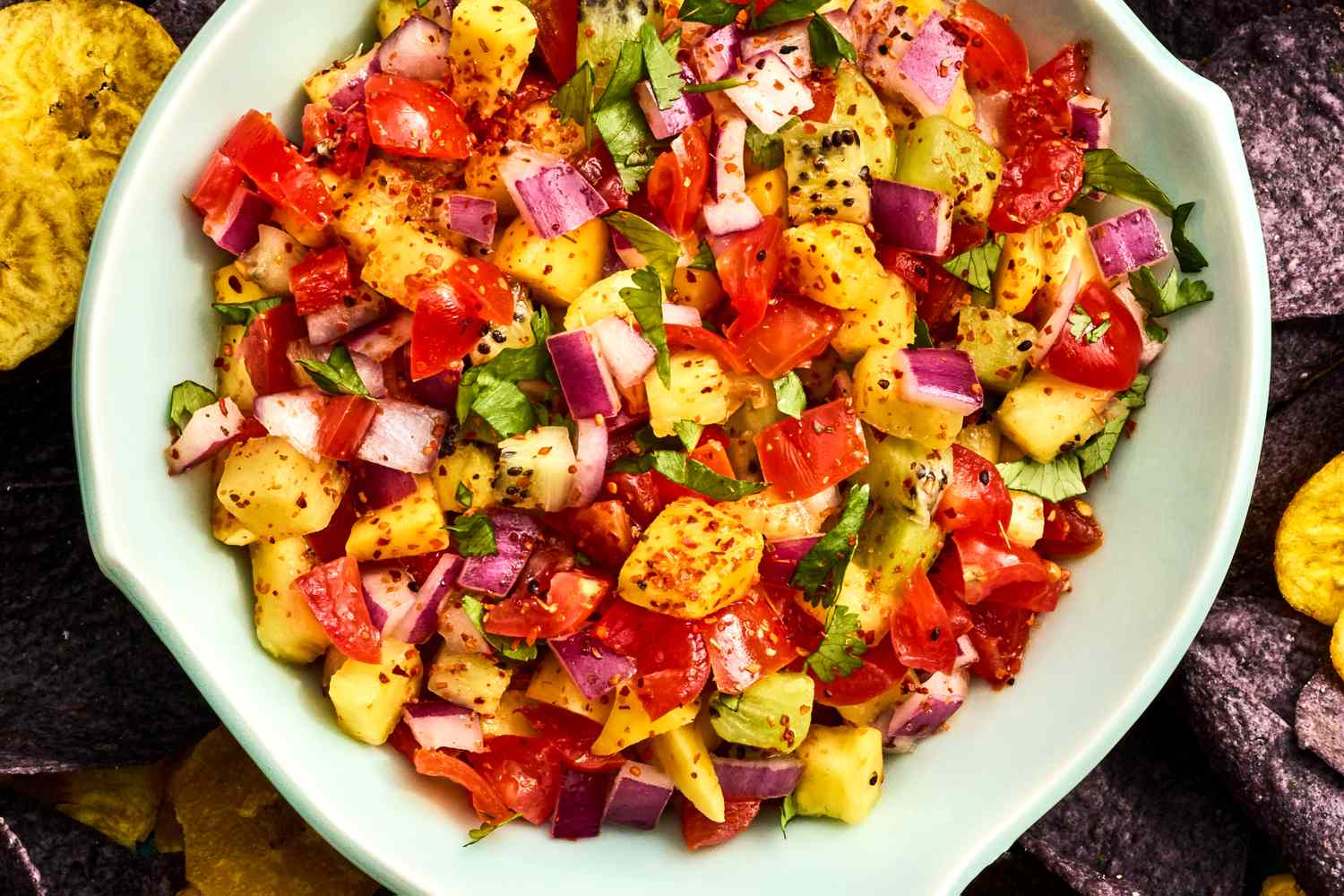Pico: A Bowl of Brightness

Salsa, including pico de gallo, isn’t just a condiment—it’s a celebration. A handful of fresh ingredients, chopped and tossed together, becomes something far more than the sum of their parts. Tomatoes, peppers, onion, cilantro, and lime: each ingredient has its own story, its own nutrient gifts, and its own cultural roots. Together, they’re a food that’s as nourishing as it is festive. With Día de los Muertos approaching, it feels fitting to honor salsa—not only as a table staple, but as a vibrant reminder of connection, memory, and community.
Culture & History
The word “salsa” means “sauce” in Spanish, but this sauce has a rich history spanning centuries. Salsa fresca—also known as pico de gallo—is traced back to the Aztec, Mayan, and Incan civilizations, long before tomatoes were introduced to Europe. It has always been about freshness and immediacy: chopped by hand, devoured, shared freely. Today, salsa is the number one condiment in the U.S., surpassing ketchup—a quiet testament to how Mexican food traditions have shaped what we eat and how we gather.

Nutrition Science
What makes salsa special is that every ingredient contributes something powerful.
- Tomatoes are rich in lycopene, a carotenoid that has been studied for its role in heart health and its potential to reduce the risk of certain cancers. Cooking tomatoes enhances the lycopene content, but raw versions still provide antioxidants and vitamin C.
- Peppers, whether sweet or hot, provide an abundance of vitamin C. Spicy varieties add capsaicin, which may improve circulation and even support metabolic health. (We dove deeper into peppers in this earlier post.)
- Onions are packed with organosulfur compounds and prebiotics that nourish beneficial gut bacteria.
- Cilantro is rich in antioxidants and has been studied for its potential to help bind heavy metals (although the evidence is mixed, it’s a traditional use worth noting).
- Lime contains vitamin C, as well as flavonoids like hesperidin, which are being studied for their potential vascular and anti-inflammatory effects.
Together, these ingredients create a dish that supports immunity, gut health, circulation, and more, with minimal added calories.

Variations & Additions
One of salsa’s joys is its adaptability. Add-ins bring both new flavors and new nutrients.
- Jicama adds crunch, fiber, and prebiotics to support gut health (we explored its benefits in this post).
- Mango or pineapple adds natural sweetness, vitamin A precursors, and tropical flair.
- Garlic boosts cardiovascular health through allicin and other sulfur compounds.
- Avocado brings creaminess, heart-healthy monounsaturated fats, and potassium.
- Spices (such as cumin or chili powder) are rich in antioxidants and warmth.
Each variation keeps salsa rooted in its fresh, vibrant identity while giving it new nutritional layers.

Sustainability & Affordability
Salsa is as affordable as food gets: a few cents’ worth of vegetables and herbs become a bright centerpiece for meals. From a sustainability lens, each ingredient tells a different story. Tomatoes and peppers are best when field-grown and seasonal; imported varieties from warmer regions often have a lower environmental footprint than those grown in greenhouses (or hot houses) in cold climates.
Onions and cilantro are relatively low-impact crops that grow quickly and easily. Limes and other citrus have a moderate footprint but can often be sourced seasonally from nearby regions.
Avocados, as I’ve mentioned before, come with well-documented concerns regarding water use, land practices, and human rights violations (more on that here); buying California-grown avocados is one way to avoid supporting human rights abuses against individuals and communities.
The good news: salsa doesn’t depend on any one ingredient. You can build it from what’s most local, seasonal, and accessible, keeping both your wallet and the planet in mind.

Practical Tips
- Keep it simple and fresh: hand-chopped salsa tastes better than blended, as each ingredient retains its individuality.
- Swap in seasonal fruits—mango, pineapple, or peach—for a sweet variation.
- Make it last: salsa keeps for 3–4 days in the fridge, but adding lime juice helps preserve its freshness.
- Serve it beyond chips: spoon it over roasted potatoes, tuck it into lettuce wraps, or dollop it on a grain bowl.
Wrap-Up
Salsa is more than a topping. It’s history, nutrition, affordability, and joy all in one bowl. Around Día de los Muertos, when families honor loved ones with food, color, and memory, salsa sits naturally at the table: bright, alive, and shared. And like so much of Mexican food culture, it reminds us that the simplest combinations can carry the most profound meaning.
Resources



Check out my full website.
Explore my bookshop.org store for books on the biome and related subjects.
(This blog is not intended to diagnose or treat disease. I am not a physician. Please consult your physician for any medical advice. Thanks.)
Affiliate note: I have affiliate relationships with Bookshop, Azure Standard, and Amazon. If you click through and make a purchase, I may earn a small commission at no extra cost to you. I strongly support both Azure and Bookshop for their mission-driven models, and I also include Amazon links, as I know many people find it the most convenient and affordable option. As an Amazon Associate, I earn from qualifying purchases.







